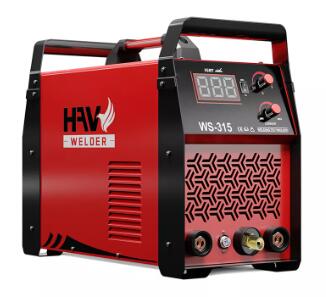Understanding How the Gas Delay Function Works in a TIG Welding Machine
2024-05-30
In the world of precision welding, TIG (Tungsten Inert Gas) welding stands out as a technique that demands accuracy and control. One of the key features that contribute to the success of TIG welding is the Gas Delay function. This blog will explore how the Gas Delay function works in a TIG welding machine and why it is essential for achieving high-quality welds.
What is the Gas Delay Function?
The Gas Delay function in a TIG welding machine is a feature that allows for a delayed shut-off of the inert gas flow after the welding arc is extinguished. This delay ensures that the weld pool remains protected from oxidation and contamination until it cools down sufficiently.
How Does the Gas Delay Function Work?
The Gas Delay function works in a TIG welding machine by utilizing a timer or a sensor that detects when the welding arc is extinguished. Once the arc is no longer present, the timer or sensor triggers the Gas Delay function.
Here's a step-by-step breakdown of how the Gas Delay function works:
Arc Extinction Detection: The welding machine constantly monitors the welding arc. When the arc is extinguished, either due to the welder releasing the torch trigger or the completion of a welding pass, the machine detects this change.
Triggering the Gas Delay: Upon detecting the extinction of the arc, the welding machine triggers the Gas Delay function. This function overrides the standard shut-off sequence for the inert gas supply.
Delayed Shut-off: The Gas Delay function allows the inert gas to continue flowing for a pre-set period of time, even after the arc is extinguished. This delay ensures that the weld pool remains protected from oxidation and contamination during the cooling process.
Automatic Shut-off: After the pre-set delay time has elapsed, the Gas Delay function automatically shuts off the inert gas supply. This ensures that the gas is not wasted and that the welding environment is safe for the operator.
Why is the Gas Delay Function Important?
The Gas Delay function is crucial in achieving high-quality welds in TIG welding. Here's why:
Prevention of Oxidation: As soon as the welding arc is extinguished, the weld pool is vulnerable to oxidation. The Gas Delay function ensures that the inert gas continues to flow for a specified period, providing a protective shield over the weld pool and preventing oxidation.
Reduction of Weld Defects: Oxidation and contamination can lead to various weld defects, such as porosity and inclusions. By delaying the shut-off of the inert gas, the Gas Delay function minimizes the chances of these defects occurring, resulting in improved weld quality.
Improved Weld Appearance: By preventing oxidation and contamination, the Gas Delay function also contributes to a more aesthetically pleasing weld appearance. The finished weld will have a smoother, cleaner, and more consistent look.
In conclusion, the Gas Delay function in a TIG welding machine is a crucial aspect that ensures the weld pool remains protected from oxidation and contamination after the welding arc is extinguished. By understanding how this function works and utilizing it effectively, welders can achieve superior welding results and improved productivity.



